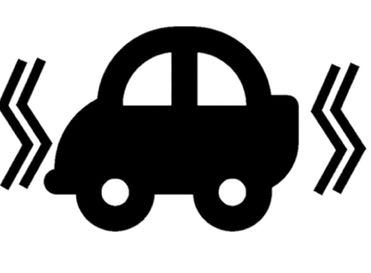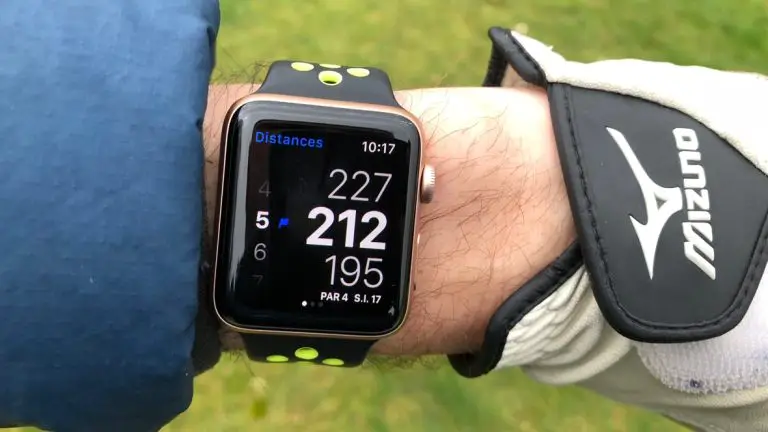Why Does My Electric Golf Car Jerk, Shudder Or Shake

Riding in an electric golf car is meant to be a smooth and enjoyable experience, but what happens when it starts to jerk, shudder, or shake? These unexpected movements can be both frustrating and concerning for golfers. Understanding the reasons behind why your electric golf car exhibits these undesirable behaviors is crucial for addressing the issue and restoring a comfortable ride.
In this article, we will explore the various factors that can contribute to your electric golf car jerking, shuddering, or shaking. From problems with the motor and drivetrain to issues with the battery and electrical system, tires and wheels, suspension, brakes, controller, and other potential culprits, we will dive deep into each aspect to provide you with a comprehensive understanding.
Whether you’re a golf enthusiast or a recreational player, identifying the root causes of these movements is essential for maintaining your golf car’s performance and ensuring a pleasant ride. By gaining insights into the possible factors and their effects, you’ll be equipped with the knowledge to diagnose the issue and take the necessary steps to resolve it.
So, let’s embark on this journey of exploration, uncovering the mysteries behind why your electric golf car jerks, shudders, or shakes. By the end of this article, you’ll have a clear understanding of the potential causes and actionable solutions to restore a smooth and enjoyable ride on the golf course.

Macro-Semantic Context: Battery and Electrical System
Is the battery the primary cause for the jerking, shuddering, or shaking?
The battery and electrical system of your electric golf car play a vital role in its overall performance. Any issues in this system can lead to jerking, shuddering, or shaking. Let’s explore the possible factors in detail.
Battery Charge Level and Connections
The charge level of your golf car’s battery is crucial for optimal performance. A low battery charge can result in inadequate power delivery to the motor, causing jerking or hesitation during acceleration. Additionally, loose or corroded battery connections can lead to intermittent power flow, leading to uneven operation. Regularly monitoring the battery charge level and ensuring tight and clean connections can help maintain a smooth ride.
Battery Age and Maintenance
The age and maintenance of the battery can also impact the performance of your electric golf car. Over time, batteries can degrade, resulting in reduced capacity and potential voltage fluctuations. Regular battery maintenance, such as proper charging and periodic inspections, can prolong its lifespan and minimize the chances of jerking or shaking.
Faulty Charger or Charging System
A malfunctioning charger or charging system can contribute to performance issues in your electric golf car. If the charger fails to provide the correct charging voltage or experiences irregular charging patterns, it can affect the battery’s overall health and performance. Checking the charger and charging system for any faults or abnormalities is essential to ensure a consistent and smooth ride.
Micro-Semantic Context: Tires and Wheels
Can issues with tires and wheels cause the jerking, shuddering, or shaking?
The condition of your golf car’s tires and wheels directly affects ride quality and stability. Let’s examine the potential tire and wheel-related factors contributing to jerking, shuddering, or shaking.
Tire Condition and Pressure
The condition and inflation pressure of the tires significantly impact how your electric golf car rides. Uneven tire wear, punctures, or imbalanced tire pressure can lead to vibrations and instability. Regularly inspecting the tires for any signs of wear, maintaining proper inflation pressure, and replacing worn-out tires can enhance the smoothness of your ride.
Wheel Alignment and Balance
Proper wheel alignment and balance are crucial for ensuring a steady and vibration-free ride. Misaligned wheels or unbalanced tire and wheel assemblies can cause irregular contact with the road surface, leading to jerking or shaking. Periodic wheel alignments and balancing, particularly after hitting curbs or potholes, can help maintain the optimal alignment and balance of your golf car’s wheels.
Micro-Semantic Context: Suspension System
How does the suspension system contribute to the jerking, shuddering, or shaking?
The suspension system of your electric golf car plays a significant role in providing a comfortable and stable ride. Let’s explore the potential suspension-related factors that can cause jerking, shuddering, or shaking.
Worn or Damaged Suspension Components
Over time, the various components of the suspension system, such as springs, shock absorbers, and bushings, can wear out or become damaged. This wear and tear can result in a compromised suspension system, leading to increased vibrations and instability. Inspecting the suspension components regularly and replacing any worn or damaged parts can help restore a smoother ride.
Improper Suspension Settings or Adjustments
Incorrect suspension settings or adjustments can also contribute to jerking or shaking in your electric golf car. Factors such as excessive or insufficient suspension stiffness, incorrect ride height, or improper damping settings can affect the vehicle’s stability and ride quality. Consulting with a professional or referring to the manufacturer’s guidelines for proper suspension settings and adjustments can help optimize the performance of your golf car.
Micro-Semantic Context: Brakes and Brake System
Can issues with the brakes cause the jerking, shuddering, or shaking?
The braking system of your electric golf car is essential for both safety and smooth operation. Let’s explore how brake-related issues can lead to jerking, shuddering, or shaking.
Brake Pad Condition and Wear
Worn or damaged brake pads can cause uneven braking performance, resulting in jerking or shaking when applying the brakes. Over time, brake pads can wear down, reducing their effectiveness and potentially leading to vibrations or instability during braking. Regularly inspecting the brake pads and replacing them as needed can ensure smooth and consistent braking performance.
Brake Calipers and Rotors
Faulty brake calipers or warped brake rotors can also contribute to jerking or shaking in your electric golf car. Sticking or malfunctioning calipers may cause uneven braking force distribution, leading to vibrations or pulling to one side during braking. Similarly, warped brake rotors can create pulsation and instability. Inspecting the brake calipers and rotors for any signs of damage or irregularities and addressing them promptly can help maintain smooth and reliable braking performance.
Brake System Misalignment
Misalignment within the brake system, such as improper installation or adjustment of brake components, can result in jerking or shaking during braking. It can lead to uneven application of braking force or inadequate engagement, causing vibrations and instability. Ensuring that the brake system is correctly aligned and properly adjusted by qualified professionals is crucial for optimal brake performance.
By addressing any issues related to the suspension system and brakes, you can significantly improve the smoothness and stability of your electric golf car. In the next sections, we will explore additional factors, such as the motor and drivetrain, controller and wiring, and other potential contributors to jerking, shuddering, or shaking. Stay tuned for valuable insights and actionable tips to diagnose and resolve these issues for a more enjoyable ride on the golf course.
Macro-Semantic Context: Motor and Drivetrain
Can problems with the motor and drivetrain contribute to the jerking, shuddering, or shaking?
The motor and drivetrain of your electric golf car are integral components responsible for propelling the vehicle. Issues within these systems can result in jerking, shuddering, or shaking. Let’s explore the potential factors in detail.
Motor Performance and Maintenance
The performance and maintenance of the electric motor in your golf car can directly impact its smooth operation. A motor that is experiencing problems, such as worn brushes, faulty windings, or insufficient power delivery, can cause jerking or hesitation during acceleration. Regular motor maintenance, including cleaning, lubrication, and periodic inspections, can help ensure optimal performance and minimize unwanted vibrations.
Transmission or Gearbox Issues
If your electric golf car is equipped with a transmission or gearbox, any issues within these components can contribute to jerking, shuddering, or shaking. Problems such as worn gears, improper gear engagement, or inadequate lubrication can result in inconsistent power delivery and an unstable ride. Regular maintenance and servicing of the transmission or gearbox can help address these issues and promote smoother operation.
Worn or Damaged Drivetrain Components
The drivetrain components, including drive belts, chains, or driveshafts, are responsible for transferring power from the motor to the wheels. Over time, these components can experience wear or damage, leading to jerking or vibrations. Regular inspection and replacement of worn or damaged drivetrain components can help maintain a smooth and reliable power transfer, minimizing unwanted movements.
Improper Gear Selection or Engagement
In some cases, jerking or shaking may be a result of improper gear selection or engagement. If the electric golf car has selectable gears or speed settings, selecting the wrong gear or engaging the gear abruptly can cause abrupt power delivery, resulting in jerking or shuddering. Familiarizing yourself with the proper gear selection and engaging the gears smoothly can contribute to a smoother and more enjoyable ride.
Addressing any motor or drivetrain-related issues is crucial to ensure the smooth operation of your electric golf car. Regular maintenance, inspections, and timely repairs can help maintain the performance and reliability of these components.
Micro-Semantic Context: Controller and Wiring
How does the controller and wiring affect the jerking, shuddering, or shaking?
The controller and wiring system in your electric golf car play a critical role in regulating power delivery and ensuring proper electrical connections. Let’s explore how issues with the controller and wiring can contribute to jerking, shuddering, or shaking.
The Role of the Controller
The controller is responsible for controlling the power flow from the battery to the motor, ensuring smooth acceleration and deceleration. A malfunctioning or improperly adjusted controller can disrupt the power delivery, resulting in jerking or hesitation. Regular inspections, proper maintenance, and adjustment of the controller settings can help optimize its performance and minimize unwanted movements.
Faulty Wiring or Loose Connections
The electrical wiring system of your electric golf car is essential for transmitting power and signals between various components. Faulty wiring or loose connections can interrupt the electrical flow, leading to irregular power delivery and vibrations. Regularly inspecting the wiring system, ensuring proper insulation, and tightening any loose connections can help maintain a reliable and smooth electrical operation.
Controller or Sensor Malfunctions
Malfunctions within the controller or related sensors can also contribute to jerking, shuddering, or shaking. Issues such as faulty throttle position sensors or speed sensors can disrupt the feedback and control signals, resulting in inconsistent power delivery. Regular diagnostics, sensor calibrations, and controller troubleshooting can help identify and resolve these malfunctions, restoring a smooth ride.
Inspecting the controller and wiring system, as well as addressing any faults or malfunctions, is crucial to ensuring the smooth and reliable operation of your electric golf car. By regularly maintaining and troubleshooting these components, you can minimize the chances of experiencing jerking, shuddering, or shaking during your rides.
Micro-Semantic Context: Other Factors
Are there any other factors that can contribute to the jerking, shuddering, or shaking?
While the battery, tires, suspension, brakes, motor, drivetrain, controller, and wiring are common culprits for jerking, shuddering, or shaking in an electric golf car, there are a few other factors to consider. Let’s explore them in detail.
Uneven Terrain or Surface Conditions
Uneven terrain or rough surface conditions can cause vibrations and instability, leading to jerking or shaking in your golf car. Bumpy paths, potholes, or gravel surfaces can amplify these effects. While it may not be possible to completely eliminate these external factors, driving with caution and adjusting your speed accordingly can help minimize the impact on your ride quality.
Overloading the Golf Car
Exceeding the recommended weight capacity of your electric golf car can strain the suspension system and lead to increased vibrations or instability. Distributing the load evenly and avoiding overloading the vehicle can help maintain a smoother ride. Refer to the manufacturer’s guidelines for the maximum weight capacity and adhere to them to ensure optimal performance.
Malfunctioning Steering System
A malfunctioning steering system can contribute to jerking or shaking when maneuvering your electric golf car. Problems such as worn steering components, loose connections, or misaligned steering mechanisms can affect the stability and smoothness of the steering. Regular inspections, maintenance, and prompt repairs of the steering system can help ensure precise control and minimize unwanted movements.
Inadequate Maintenance or Regular Servicing
Neglecting routine maintenance or failing to schedule regular servicing can lead to various issues in your electric golf car, including jerking, shuddering, or shaking. Regularly inspecting and maintaining all the components, following the manufacturer’s recommended maintenance schedule, and addressing any potential problems promptly can help prevent and mitigate these issues.
By considering these additional factors and incorporating them into your troubleshooting process, you can further refine the performance and ride quality of your electric golf car.
Conclusion
In conclusion, experiencing jerking, shuddering, or shaking in your electric golf car can be disruptive and frustrating. However, by systematically examining various components and factors, including the battery and electrical system, tires and wheels, suspension system, brakes, motor and drivetrain, controller and wiring, and other potential contributors, you can identify and address the underlying causes. Regular maintenance, inspections, and timely repairs are crucial for ensuring a smooth and enjoyable ride on the golf course.
Remember, if you encounter persistent or severe issues with your electric golf car, it is advisable to seek assistance from a qualified professional or contact the manufacturer for specialized support. By maintaining your golf car’s components and addressing any issues promptly, you can optimize its performance, extend its lifespan, and enhance your overall golfing experience.






